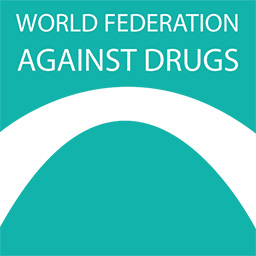During the 16 days of activism, which started on November 25th on the International Day for the Elimination of Violence Against Women and will end on December 10th on the International Day of Human Rights, the WFAD Gender Working Group is publishing statements every day highlighting issues faced by different specific populations while continuing to highlight the topic of this year: UNiTE! Activism to End Violence against Women and Girls
Gender-based violence and substance use are strongly interlinked. The negative health impact the experienced violence has on the survivor can lead to substance misuse. Additionally, substance use perpetrator often accelerates violence. Therefore, each statement, calling for preventing and eradicating gender-based violence, also calls for substance use prevention as well as sensitised and comorbid treatment.

As showcased earlier, there is a high prevalence of gender-based violence (GBV) against women. This prevalence is even higher when it comes to female sex workers. They face increased vulnerability and risk of gender-based violence due to their socio-structural environment. On top of that, female sex workers using substances are at a heightened risk of physical or sexual gender-based violence than those without drug use (Hendrickson 2021).
Research by Decker, et al. (2013) showed that 42.9% reported some form of physical or sexual violence in the month prior to the disseminated survey. Yet, this issue remains under-researched. The experience of gender-based violence is often hidden by the woman due to guilt, shame, not wanting to relive the experience, reveal the engagement in sex work, or avoid punishment or further discrimination. Besides this, the experience of gender-based violence is not disclosed due to the fear of losing the job, “especially when GBV came from brothel or bar owners” (OHCHR 2019). Additionally, threats of violence by the perpetrator would withhold the female sex worker to disclose the experience. Some females had accepted the violence as part of their life and sexual violence was rarely described as rape among female sex workers.
Similar to women in the general population, physical and sexual gender-based violence is often perpetrated by the intimate partner, “including extensive control, sexual violence, and firearms” (Decker, et al. 2013). However, the predominant perpetrator among female sex workers is the client. Violence, rape, and threats often appear in a response “to the women’s refusals for particular sexual acts, often anal sex, condom non-use, or engaging with the client altogether” (Ibid). Perpetrators could be known/regular clients who were perceived as safer as well as new ones. Other perpetrators of violence are pimps or managers and the police. In the case of gender violence by the police towards the female sex worker, power dynamics play an important role. The power dynamics were exploited by the police for the female sex worker to coerce sex, most often oral sex, to avoid arrest. This is also described by research participants as “exchanging sex for freedom” (Ibid).
Experienced gender-based violence has an immense impact on women. Not only emotional distress is caused, including trauma, lower self-confidence, feeling of humiliation, fear, sadness, etc., but also family relationships were impacted and women felt isolated. Additionally, research showed that sex workers also experience economic consequences of gender-based violence as “some had to leave establishments where they worked or move to another location” (OHCHR 2019). The heightened risk of gender-based violence also increases the risk of HIV and STI symptoms and infection.
The issue calls for actions, programmes, and policy implications to reduce the violence against female sex workers, mitigate its consequences, and above all, ensure access to justice. As being a female sex worker is often still taboo and a crime, women fear speaking out and face barriers to accessing justice. Simultaneously, police do not feel accountable, enhancing the power dynamics. Therefore, more structural interventions are necessary, including partnerships and training among female sex workers, police, judges, and other stakeholders. “Procedures for safe reporting of abuse against sex workers and a climate less tolerant of impunity” (Lim, et al. 2015) need to be established. Besides this, access to care and treatment should be made available, which is coupled with interventions designed to strengthen the capacity of healthcare providers to recognise and respond to gender-based violence. Overall, more research is required.
References
Decker MR, Pearson E, Illangasekare SL, Clark E, Sherman SG. 2013. Violence against women in sex work and HIV risk implications differ qualitatively by perpetrator. BMC Public Health. https://www.ncbi.nlm.nih.gov/pmc/articles/PMC3852292/
Hendrickson, Zoé & Leddy, Anna & Galai, Noya & Beckham, Sam & Davis, Wendy & Mbwambo, Jessie & Likindikoki, Samuel & Kerrigan, Deanna. 2021. Mobility for sex work and recent experiences of gender-based violence among female sex workers in Iringa, Tanzania: A longitudinal analysis. PLOS ONE. https://www.researchgate.net/publication/352110389_Mobility_for_sex_work_and_recent_experiences_of_gender-based_violence_among_female_sex_workers_in_Iringa_Tanzania_A_longitudinal_analysis
Lim, Sahnah MPH, MIA; Peitzmeier, Sarah MPH; Cange, Charles PhD, MSc; Papworth, Erin MPH; LeBreton, Matthew BSc; Tamoufe, Ubald MSc, MPH; Kamla, Aristide MSc; Billong, Serge MD; Fokam, Pamella BS; Njindam, Iliassou MD, MPH; Decker, Michele R. PhD, MSc; Sherman, Susan G. PhD, MPH; Baral, Stefan MD, MBA, MPH. 2015. Violence Against Female Sex Workers in Cameroon: Accounts of Violence, Harm Reduction, and Potential Solutions. JAIDS Journal of Acquired Immune Deficiency Syndromes. Volume 68 – Issue – p S241-S247 https://journals.lww.com/jaids/Fulltext/2015/03011/Violence_Against_Female_Sex_Workers_in_Cameroon_.22.aspx
OHCHR. 2019. Experiences of gender-based violence among female sex workers, men who have sex with men, and transgender women in Latin America and the Caribbean: a qualitative study to inform HIV programming. https://www.ohchr.org/sites/default/files/Documents/Issues/SexualOrientation/Data/UNDP_AdditionalReference_1.pdf


Leave a Reply
You must be logged in to post a comment.